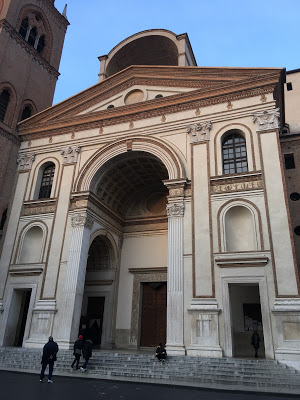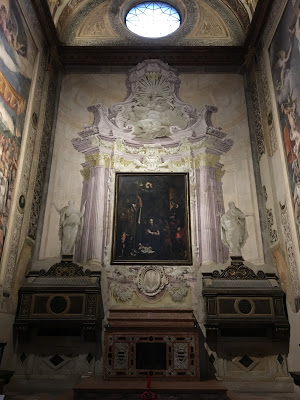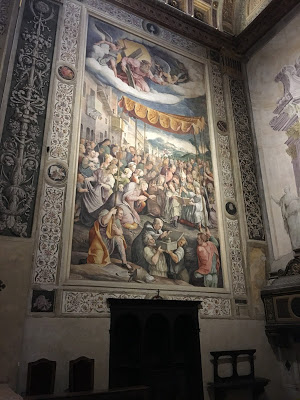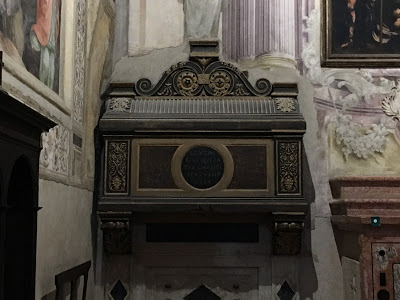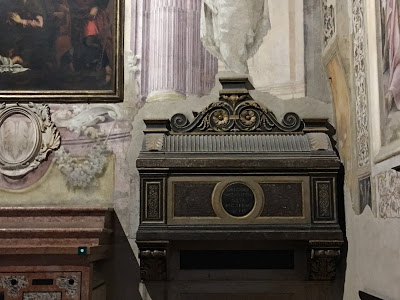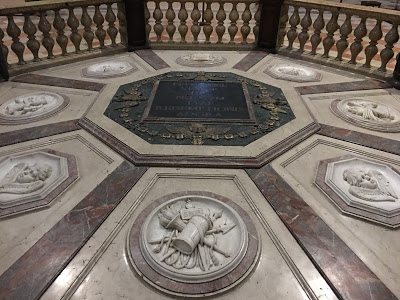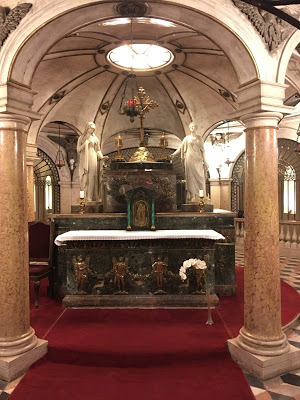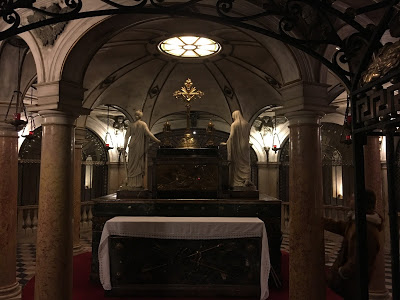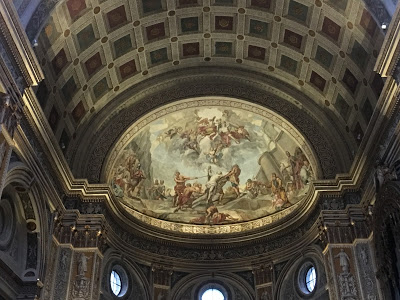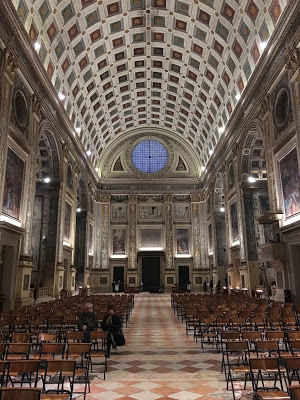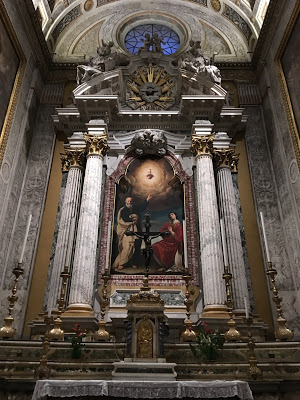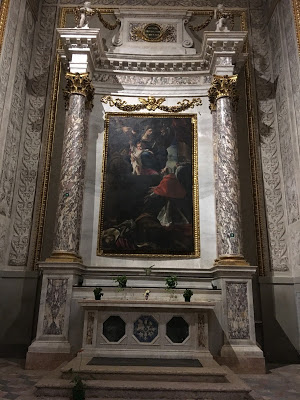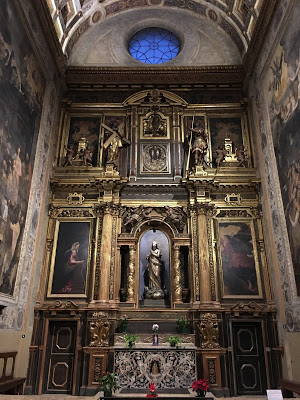

| Online: | |
| Visits: | |
| Stories: |

| Story Views | |
| Now: | |
| Last Hour: | |
| Last 24 Hours: | |
| Total: | |
The Feast of St Longinus
There are a great many variants to the story, which cannot be regarded as a reliable hagiography. The city of Lanciano in the Italian region of the Abruzzi claims him as a native son, and that his martyrdom took place there instead. The city of Mantua in Lombardy, birthplace of the poet Virgil, claims that he preached in that region, and was martyred there, and furthermore, that he brought to that city relics of the Lord’s Precious Blood, and the sponge which was used to give Him vinegar during the Passion. These are now kept in the crypt of the basilica of St Andrew, which was begun by the famous Renaissance architect Leon Battista Alberti in 1472, but only completed in 1732. Our Ambrosian correspondent Nicola de’ Grandi recently visited the city, and took these photos of the basilica.
The chapel of St Longinus. The tomb on the left contains his relics, that on the right, some of the relics of St Gregory Nazianzen, given to Mantua by Matilda of Canossa. (Detailed photos below)
The story is told that the relics of Christ’s Blood brought to Mantua by St Longinus were hidden for safekeeping by Longinus himself, and discovered in 804 when St Andrew the Apostle appeared to someone to reveal their location. (Similar stories are told about many of the famous and more improbable relics of the Middle Ages.) The rediscovery of the relics is here depicted by Giulio Romano, a disciple of Raphael who did an enormous amount of work in Mantua under the Gonzaga dukes; the Crucifixion scene below is also his.
This spot in the pavement over the crypt marks the place where the relics of Christ’s Blood are kept. “Procumbe, viator, pretium tuae redemptionis adora. – Fall down, thou who pass, adore the price of thy redemption.”
The relics are kept in a safebox which requires twelve keys to open, and is only brought out for an exposition once a year on Good Friday; custody of the keys is divided between the basilica, the bishop of Mantua, the chapter, and the civil prefect of the city. The reliquaries seen here on top of the box are copies of the originals inside it.
The central nave seen from the back of the church. (Sadly, the main sanctuary has been horribly defaced by the addition of a painfully white cathedra and forward-facing altar.)
Source: http://www.newliturgicalmovement.org/2017/03/the-feast-of-st-longinus.html




